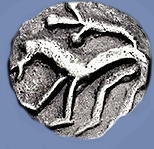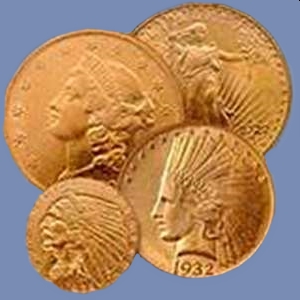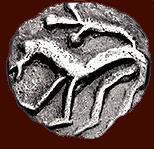








Designed by Nigel G Wilcox






The Paragon Of Metal Detecting
& Archaeology
& Archaeology
Powered By Sispro1
Anglo-Saxon & Viking A.D. - Currency Numismatics,
Penny
For Reference ONLY
Everything For The Detectorist
Penny
Copyright All Rights Reserved by Nigel G Wilcox E-Mail: ngwilcox100@gmail.com
Viking Menu
Viking Anglo-Saxon Menu
Main Coin Menu
Viking Menu
Viking Timeline
Anglo-Saxon Timeline
| Estimated Value 2014 650 |
Sweyn II Estridsson Ulfsson 1047-1075 AD
Size Approx. 20.25 -20.75 mm Weight 1.46g.
'Nephew of Cnut' Viking Penny. Silver, 1.05 grams; 17.65 mm. Roskilde Mint, Circa 1047 - 1075 A.D. Obverse: Geometric pattern of dots and lines, bearing a resemblance to a tapestry of this period. Reverse: Cross formed of arcs, jewelled cross in centre and a moneyer s name around in the angels. An important Viking coin with strong English connections, a nephew of Cnut, and contemporary with the battle of Hastings ending the Anglo Saxon rule of England. Similar examples sold by Stacks, 22 and 23 April, 1999, Ref: Hauberg 36, CM BA 86, 16; 1995,7-8; 1846, 3-13-3. A seldom offered coin in a Almost Extremely Fine condition
Sweyn II Estridsson Ulfsson was the King of Denmark from 1047 until his death. He was the son of Ulf Thorgilsson and Estrid Margarete Svendsdatter, daughter of Sweyn I of Denmark and sister of Canute the Great.
Because of his relationship to Canute the Great he was a pretender to the throne from his early years. When king Harthacanute died in 1042, he claimed the Danish throne, but lost to Norway's King Magnus, who made Svend a jarl (earl or viceroy) instead.
He soon rebelled against Magnus and had the Danish nobles crown him king, but was defeated by Magnus and fled to Sweden. The war between Magnus and Sweyn lasted until 1045, when Harald Hardr de returned to Norway from exile. Harald and Sweyn joined forces and forced Magnus to share the throne with Harald.
In 1047 Magnus died, having stated on his deathbed that his kingdom would be divided up: Harald would get the throne of Norway, while Svend would be king of Denmark. Harald, unwilling to relinquish Denmark, now attacked Sweyn and fought a long war which dragged on until 1064, when Harald relinquished his claims to Denmark.
After Harald was defeated and killed at the Battle of Stamford Bridge and William the Conqueror in turn defeated Harold Godwinson, Sweyn turned his attention to England, once ruled by his uncle Canute the Great. He joined forces with Edgar Atheling, the last remaining heir of the Anglo-Saxon royal house, and sent a force to attack King William in 1069. However, after capturing York, Sweyn, accepted a payment from William to desert Edgar, who then returned into exile in Scotland.
Sweyn's first marriage was to a girl to whom he was distantly related, and the pope ordered that he dissolve the union, which he did, only to take one mistress after another during the rest of his life. Sweyn fathered at least 19 children, probably more, and while none of them were born in wedlock, and none of their mothers are known, five of his numerous sons became kings after his death.
Sweyn is often considered to be Denmark's last Viking king as well as the first medieval one. His skeleton shows him to have been a tall, powerfully built man who walked with a limp.
Sweyn built a strong foundation for royal power through cooperation with the church. He completed the final partition of Denmark into dioceses, and corresponded with the pope. Sweyn seems to have been able to read and write, and he is the source of much of our current knowledge about Denmark and Sweden in the 9th and 10th centuries, having told the story of his ancestry to historian Adam of Bremen around 1070.
Sweyn II Estridsson Ulfsson was the King of Denmark from 1047 until his death. He was the son of Ulf Thorgilsson and Estrid Margarete Svendsdatter, daughter of Sweyn I of Denmark and sister of Canute the Great.
Because of his relationship to Canute the Great he was a pretender to the throne from his early years. When king Harthacanute died in 1042, he claimed the Danish throne, but lost to Norway's King Magnus, who made Svend a jarl (earl or viceroy) instead.
He soon rebelled against Magnus and had the Danish nobles crown him king, but was defeated by Magnus and fled to Sweden. The war between Magnus and Sweyn lasted until 1045, when Harald Hardr de returned to Norway from exile. Harald and Sweyn joined forces and forced Magnus to share the throne with Harald.
In 1047 Magnus died, having stated on his deathbed that his kingdom would be divided up: Harald would get the throne of Norway, while Svend would be king of Denmark. Harald, unwilling to relinquish Denmark, now attacked Sweyn and fought a long war which dragged on until 1064, when Harald relinquished his claims to Denmark.
After Harald was defeated and killed at the Battle of Stamford Bridge and William the Conqueror in turn defeated Harold Godwinson, Sweyn turned his attention to England, once ruled by his uncle Canute the Great. He joined forces with Edgar Atheling, the last remaining heir of the Anglo-Saxon royal house, and sent a force to attack King William in 1069. However, after capturing York, Sweyn, accepted a payment from William to desert Edgar, who then returned into exile in Scotland.
Sweyn's first marriage was to a girl to whom he was distantly related, and the pope ordered that he dissolve the union, which he did, only to take one mistress after another during the rest of his life. Sweyn fathered at least 19 children, probably more, and while none of them were born in wedlock, and none of their mothers are known, five of his numerous sons became kings after his death.
Sweyn is often considered to be Denmark's last Viking king as well as the first medieval one. His skeleton shows him to have been a tall, powerfully built man who walked with a limp.
Sweyn built a strong foundation for royal power through cooperation with the church. He completed the final partition of Denmark into dioceses, and corresponded with the pope. Sweyn seems to have been able to read and write, and he is the source of much of our current knowledge about Denmark and Sweden in the 9th and 10th centuries, having told the story of his ancestry to historian Adam of Bremen around 1070.
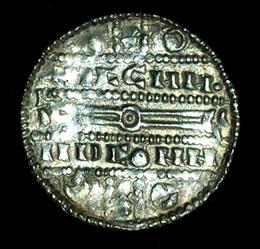
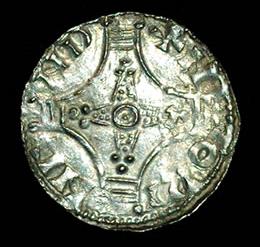
Penny (Silver)
Pages
Main Coin Menu
Viking to Anglo-Saxon Menu
Member NCMD
V. Menu
Information Data

